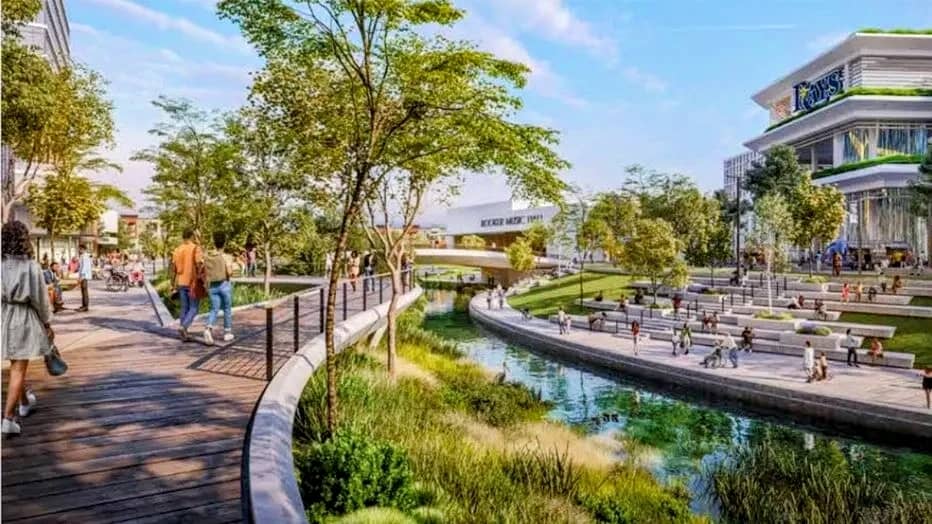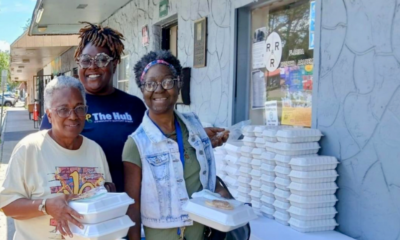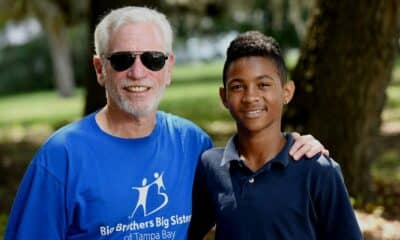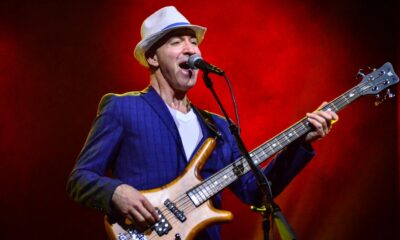Thrive
Stadium project will feature $1 million in public art

The proposed new Tampa Bay Rays ballpark and surrounding Historic Gas Plant District redevelopment will each feature $500,000 worth of city-owned, insured and maintained public art installations.
The St. Petersburg City Council approved an ordinance amendment April 4 that expands where officials can place public art. A percentage of construction costs for municipally funded projects must benefit the Art in Public Places Fund, and sections of the current code limit installations to city-owned property.
Previously proposed changes extended to developments on private land and highlighted the Dali Museum as an example of city property. However, a new Rays ballpark was the impetus for the amendment as Pinellas County will own the roughly 13-acre site within the Gas Plant redevelopment.
“One of my concerns is that we’re changing a long-standing ordinance for one project,” said Councilmember Gina Driscoll. “By keeping things the same, we’re not eliminating opportunities for public art to be placed. It’s just about being placed in this one spot.”
Public works projects with construction costs between $100,000 and $2.5 million must contribute 2% of the total to the fund. That decreases to three-quarters of a percent if the price exceeds $10 million.
Celeste Davis, director of arts culture and tourism, said the requested amendment would ensure public art is part of the redevelopment. She later clarified that stakeholders could still provide installations without utilizing the fund.
“I believe that the county and Rays/Hines group is very much a huge supporter of the arts,” Driscoll said. “There is no doubt in my mind that there would still be public art, even if it was not paid for by city funds.
“We are handing the developer a half-million dollars so that they can hand it back to us to cover the cost of the contribution to this fund.”
James Corbett, city development administrator, noted the importance of featuring public art at the stadium site. Stakeholders plan to highlight the location’s rich African American history.
An ordinance provision allows officials to place installations adjacent to a municipally funded project location. Corbett said the city would pay for the redevelopment’s public art “no matter what – this is really about the location.”
Driscoll said the city could eschew the amendment and reduce its stadium contribution by $500,000. She said officials “want everything to be perfect,” regardless of the cost.
Davis explained that privately owned parcels in the redevelopment would also contribute to the fund. However, officials must then place the art on city land.
The developer could skip the process and provide public art of equal value. Councilmember Richie Floyd called that an “interesting aspect” when administrators were amending an ordinance to offer more installations at the stadium.
He also expressed trepidation with the funding mechanism but noted it was just a fraction of a percent of the city’s redevelopment costs. Floyd said a recent report found that St. Petersburg spent “significantly less” on public art than “some of our peers.”
The initial draft amendment would have allowed installations on privately owned property. Councilmember Lisset Hanewicz worked with administrators to limit what she and others felt was overly broad language.
She also noted that the development team could provide public art without city funding. “My vote on this is not an indication of my vote on the (stadium) agreement or the $130 million for the infrastructure – or any of it,” Hanewicz said. “This is because I understand it’s county-owned land, and that money is public works money.”
Council Chair Deborah Figgs-Sanders said the size and scope of the redevelopment necessitates examining related city ordinances. The amendment passed 6-1, with Driscoll providing the lone “no” vote. Councilmember Brandi Gabbard was absent.








Linda
April 10, 2024at8:47 pm
No matter how many times I have tried to post the numbers that back 2.4 billion dollars, the catalyst has yet to post it.
Odessa Jackson
April 10, 2024at10:00 am
St Pete. Becoming a playground for the Rich.. They don’t care about the natives being able to afford to live here anymore.. close to the beaches and downtown.. People with money have power.. people without money have no power 😔
Steve D
April 8, 2024at9:34 pm
Linda, the stadium portion of the project is not $2.4 billion. If you’re against the project, you certainly have a right to state so. However, you lose credibility when you hyperbolize the facts.
Laura
April 8, 2024at9:23 pm
What a waste of the hard earned money of the taxpayers during a time when so many of us are struggling to keep roofs over the heads of our families are food in their stomachs. Our representatives are tone deaf.
Linda
April 8, 2024at5:52 pm
Nothing can justify the cost of 2.4 billion for the stadium.